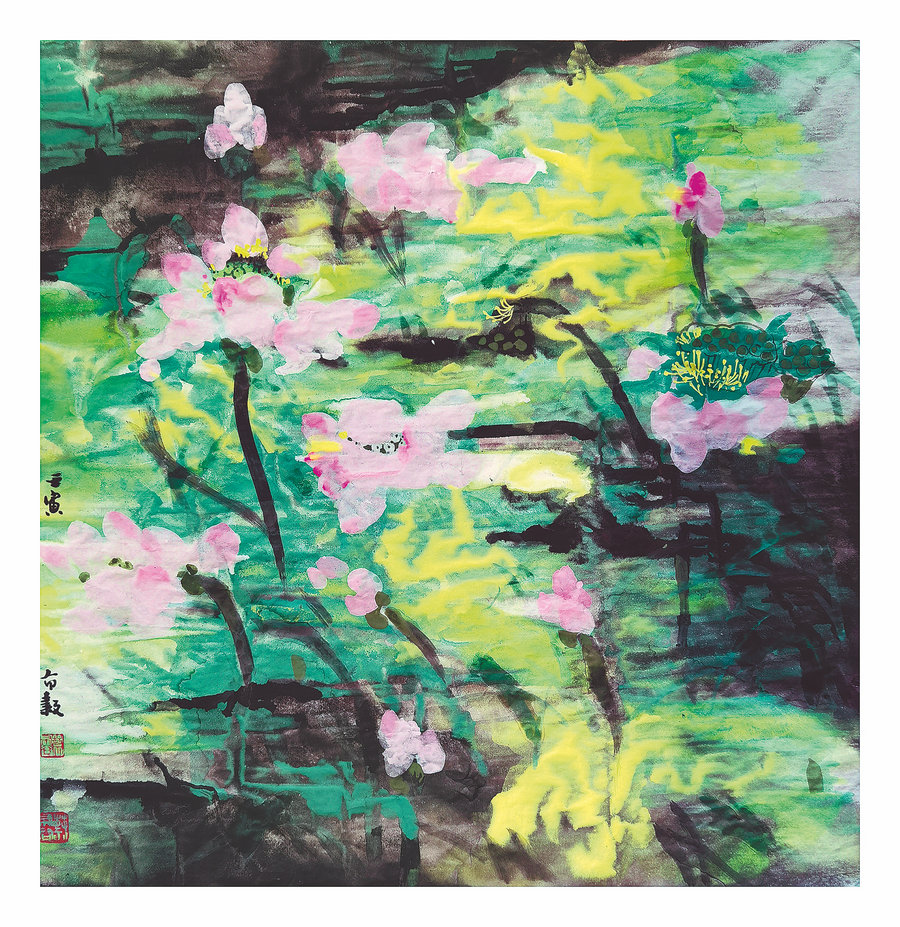

The "splashing technique" mastered by Zhang Daqian (1899-1983) was another early inspiration for Chai, with ink and colors poured and spattered with wild abandon, creating an embellishing and cascading effect, with the contours melding into a blurry periphery. "The willfully abstract depiction of nature created an ethereal aura that was hardly achieved in conventional Chinese paintings," says Chai. The "splash "of colors results in the "broken" in colors (meaning colors dissolving into each other) — "splash" and "broken" are both pronounced po in Chinese — quips Chai, and which later proliferates in her art.
Ren Bonian (1840-96), although bearing the hallmarks of Chinese realistic paintings, was one of the early bastions of the Western freestyle in China. "So exquisitely down-to-earth and accessible was his art that it garnered a wide reach. His versatility and his works' capacity of resonating even with the uninitiated impressed me," recalls Chai.
The three Chinese iconic artists, who had a profound heft on Chai's artistic explorations, share a common denominator despite being prominent in different periods of history. "They were all a bit ahead of their time, and were trailblazers in their quest for a 'zeitgeist' and future-proof artistic voice," says Chai. "An art without a zeitgeist relevance is doomed to be the denominator of the era, meaning being easily eclipsed and obliterated," she says.
In the constantly evolving art realm, Chai says, artists have to keep their ears to the ground, casting their vision beyond the original locale of their cultural exposure, extracting and appropriating the wisdom of other cultures in a good way, to ensure that their art has an enduring relevance.
This is the answer Chai chanced upon at Paris' Musee de l'Orangerie in the 1990s to the problem that had eluded her for long: "I can't simply copy the works of the three Chinese art virtuosos. But how could I possibly go a step further?"